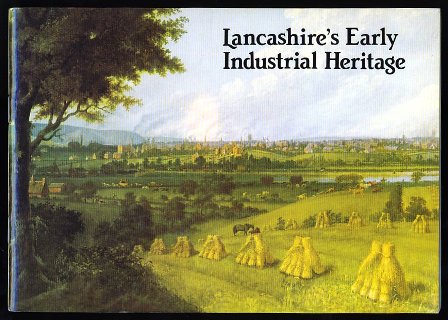|
Lancashire's Early Industrial
Heritage.
John Champness
Small paperback: 44 pages
Publisher: Lancashire County Planning Department. (1 Jan 1983)
ASIN: B001AG7WOA
Lancashire was one of the cradles of the Industrial
Revolution, the most important series of events since Man's discovery of
agriculture some 10,000 years ago. The County is now a treasure house of
fascinating remains which are tangible evidence of that century-long upheaval which
completely transformed the economy and society, first of this country and then of
every country in the developed world.
The Industrial Revolution closed the door on a world of small,
static, rural communities, a world based on natural materials, like wood and
leather, and on natural sources of power. In little more than a man's lifetime it
created what has become the Great Britain we know - a country where four fifths of
us live in towns, where two thirds of us depend in some way for our livelihood on
factory-based industry and transport using mineral fuels, and where there are about
eight times more people than there were 200 years ago.

This booklet - the first in a series - is neither a gazetteer,
nor a guide to those buildings and machines which are the most easily inspected
parts of Lancashire's early industrial heritage. It is, rather, an attempt to
explain their existence and their significance by telling the story of the
Industrial Revolution between the approximate dates of 1750 and 1850 and within the
present boundaries of the County of Lancashire. The story begins and ends with
textiles, because developments in that industry underlay changes in most other
industries.
As the leading cotton manufacturers sought to increase
production to meet a growing demand, they not merely pioneered the introduction of
new machinery and new methods of organising production in factories; they also
encouraged the improvements in transport, in mining and in building which
transformed the County's villages into towns and created the Victorian Lancashire
which Dickens caricatured in his description of Coketown.
No-one would have the stamina, and few people would have the all-embracing
interest, to undertake a journey leading to all the main features of Lancashire's
industrial heritage - even supposing that a suitable route could be devised. What
we have done instead is to provide a map, and also National Grid references (within
brackets) for the more important and easily visible sites mentioned - all of
Lancashire is in square SD. We hope that this will make it easier for you to visit
what interests you most.
David Tattersall, County Planning Officer
SEARCH FOR THIS BOOK AT ABEBOOKS
|




